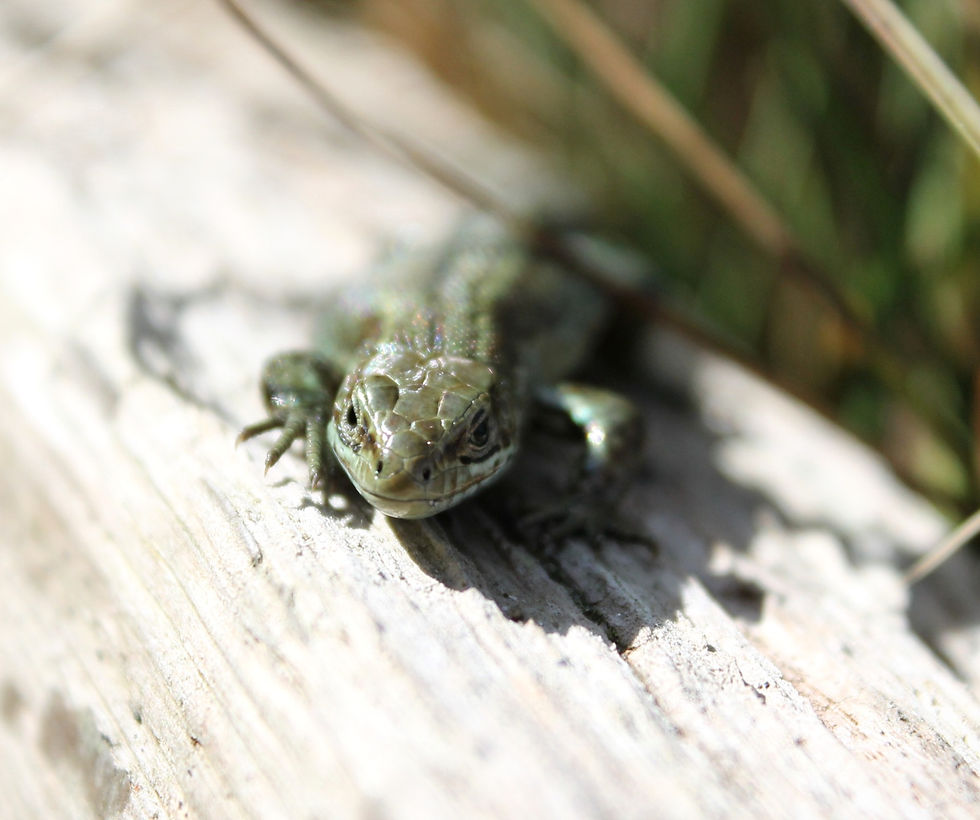Your Shein Top is Killing the Fish... and Us
- Julianne Pickard
- Jul 30, 2023
- 5 min read
Updated: Dec 13, 2023
Fast fashion- it’s everywhere. On the street, in the shops, on you and your friends. You take a photo and it’s now on the internet. Your favourite influencer is styling something new; you click the link and are immediately taken to a fast fashion website. The demand for new, cheap clothing is all around us, infiltrating the world and our bodies. And I mean that physically.

Fast fashion is a term which defines fashion trends that move from the runway to waste in under a year and it's the second most polluting industry in the world. Now, I’m as guilty as anyone in having contributed to fast fashion sales, but since studying global change it’s raised some issues that I never realised before. Back in 2020 there was a trend across social media to “boycott fast fashion” with hashtags such as "#boycottfashion #boycottboohoo #slowfashion" due the unethical working conditions and wasteful nature of clothing consumption. But today I scroll on Instagram, and I see people promoting fast fashion as if the posts we shared to promote sustainability never existed. That’s not to say that people aren’t aware, but besides the unethical aspects, do people know how greatly fast fashion affects our planet? I’m talking about microfibers and pollution, and it is now deeply rooted in our planet.
Microfibers are tiny threads of plastic less than 0.01mm in size which come from our clothes, however, these aren’t only released through the manufacture of clothing; they come off in washing machines and are washed down drains, which lead to...rivers, oceans, and the wider environment. Fast fashion clothing is one of the biggest culprits due to the large quantity of synthetic fibres within them, and the numerous amounts of washing which is required for a piece of clothing that is only worn for a brief period of time. This means that, not only are we polluting the earth when we buy an item of fast fashion, we’re also continuing to pollute every time we wash that garment. And the biggest problem with microfibers, and microplastics on the whole, is that they do not degrade or disintegrate. These tiny fibres can never be totally removed from our environment.
But why is this such an issue? Surely that’s not such a problem, it’s not like we can see them, right? I mean, yes, from an aesthetic point of view, they aren’t such an issue as litter and land fill sites, but they cause much greater problems due to their microscopic size and integration into food chains. Research has shown that organisms at all trophic levels are affected by microplastics. Whilst we may not have an interest in the effects of microplastics on lower trophic levels, such as plankton and aquatic plants, the presence of microplastics in these species leads them to accumulate up the food chain creating toxic levels for our more charismatic species such as fish and birds. Larger species are at the greatest risk of microplastic pollution due to this trophic transfer across the food web and the accumulation of pollutants over time. This affects both marine and freshwater species through absorption from their surroundings, feeding behaviour or respiratory exposure, and can inhibit organism growth, movement and even has the potential to cause brain damage. The world’s largest organism- the blue whale- has been found to be the species which ingests the most amount of plastic due to the large quantities of prey, namely krill, consumed which accumulate an enormous amount of microplastic within them.
Furthermore, microplastics have the ability to absorb contaminants such as heavy metals and organic contaminants e.g. pesticides. When microplastics enter the food chain, these toxic pollutants accumulate along with the microplastics, causing health issues for predatory organisms. The buoyant microplastics then transport these pollutants through water sources to remote areas, integrating pollution into all areas of the earth and reaching many species.

When considering the impact of microplastics on our planet's species, it’s important to remember that we are also just a species on Earth, no different from these organisms I’ve discussed. We breathe the same air, drink (pretty much) the same water, eat the same organisms; we are a part of the food chain which means if the plastic is in them, it's in us too. It is easy, when we consider our impact on the planet, to dissociate from the rest of the world, to feel disconnected from the plants and animals that live in our pollution, but whether you care about the world or not, you are forced to care when it also threatens your survival. Microplastics present a risk to human health and have been found in foodstuffs including sea-salt, honey and animal products, whilst Dutch research found that microfibers reduce the lung’s ability to regenerate themselves. Despite these health concerns, however, little has been done to stop the threat. Currently, France is the only country to have introduced mandatory microfiber filters and, whilst the EU has recognised this issue, no measures have been implemented. The UK, however, is gaining awareness on microfiber pollution and the Marine Conservation Society are campaigning to implement microfiber filters in all washing machines by 2025.
But what can we do to help ourselves and our planet? Well, the first most obvious answer is to reduce fast fashion consumption and that includes avoiding greenwashing by brands which claim to have "sustainability initiatives". We can stop buying clothes from places like Shein, PrettyLittleThing, Boohoo, H&M, Primark, Zara, Asos, Misguided, Nasty Gal etc... you get my drift. But that’s pretty much all of our high street shops, right? All that’s left are expensive sustainable brands, which is great, but not in this economy! So instead consider upcycling; over lockdown I learnt to sew, nothing complicated, just how to use a machine, and now instead of buying a new pair of trousers when they rip, I just stitch it back up. I also had a go at some thrift flips and there are tons of tutorials all over the internet so that’s a great way to stop buying new clothes. But generally, I buy second hand- charity shops are the best as the money supports great causes, but for online shopping I get most of my wardrobe from vinted or Depop, and you find the most amazing pieces for the lowest prices. We can also sign petitions to stop fast fashion so have a look at this one I've linked!

But even if we buy second hand or upcycle our stuff, those clothes will likely produce microfibers when we wash them. Well, there are several things we can do to stop that too. Firstly, here’s a link to petition for mandatory microfiber filters in all UK washing machines. In the meantime, catching microfibers from your washing is a small thing you can do to make a difference. You can buy washing machine filters or a reusable washing bag to catch them. This will mean all your current fast fashion clothes and any you buy second hand will stop polluting the environment as you wash them.
The plastic in our environment is already there and there’s little we can do to remove it, however small acts like this will slow the rate of pollution and ensure we don’t make the situation even worse. At current rates, microplastic levels are expected to increase by 50x by 2100, but if we act now we may be able to stop this from becoming a reality. And it isn’t all complete doom and gloom: the use of microbes, along with genetic manipulation, is being researched as a potential method to biodegrade microplastics. Perhaps this will be the solution we need to remove this persistent pollution.
All photography by Julianne Pickard



Comments